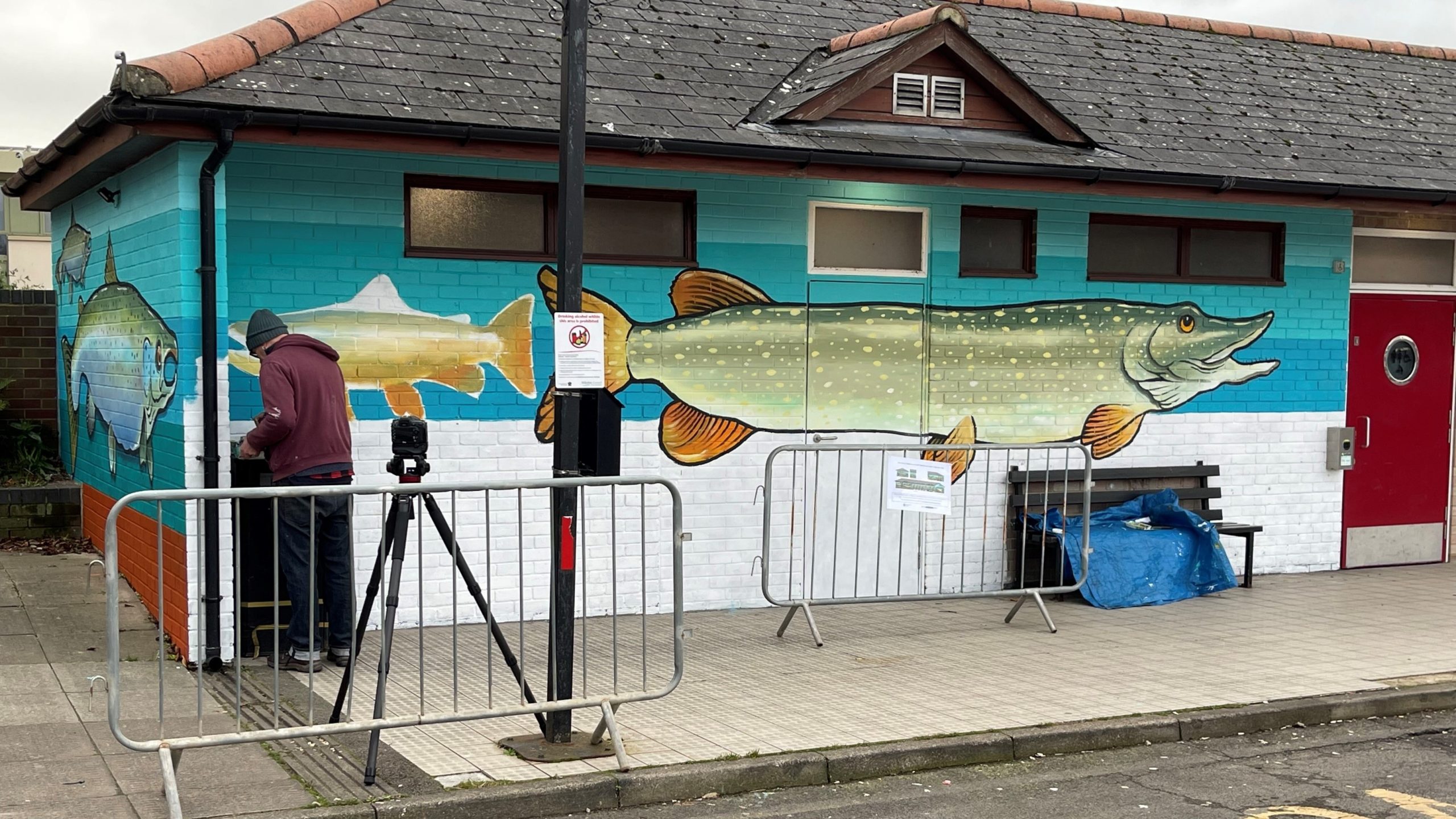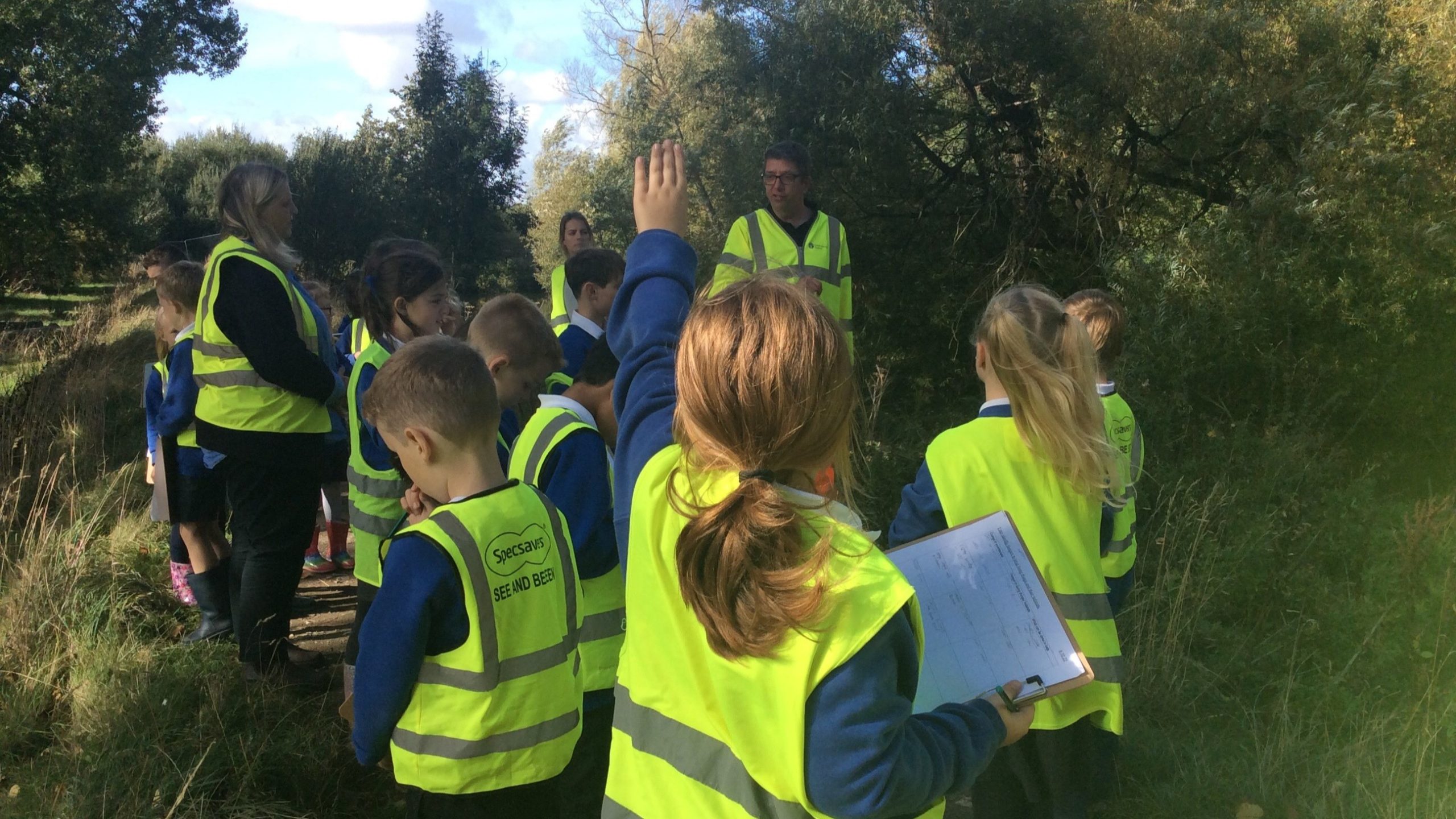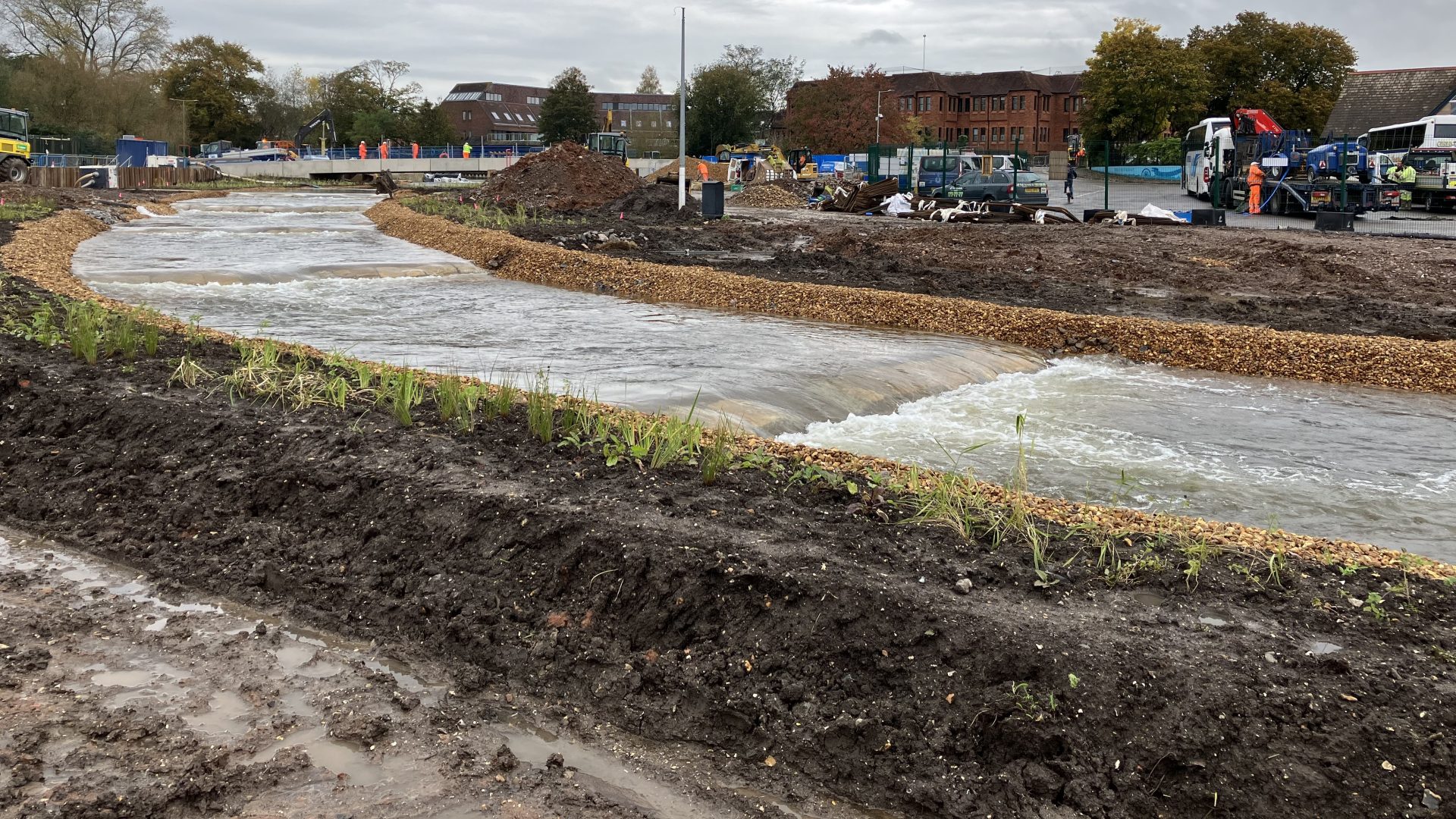Environmental and regeneration education, encompassing everything from a public art programme to water sector career opportunities, forms an integral part of the Salisbury River Park (River Corridor Improvement) Scheme in the centre of Salisbury.
Binnies, an RSK Group company, is supporting the Environment Agency through the Client Support Framework awarded in 2019 as the two organisations deliver the scheme. The project is designed to reduce flood risk to 350 residential and commercial properties within central Salisbury. It began in 2022 and will be completed this year, and it involves the construction of flood defence embankments and walls, flood control measures and river channel modifications, including river widening, the installation of rock weirs and improvements for wildlife, amenities and heritage.
Environment Agency Area Client Representative Andy Wallis said:
“The Salisbury River Park project has been a great demonstration of the added benefits that can be provided to the local community as part of a large engineering scheme, especially when it is within an urban area. Through our arts and engagement programme we have been directly able to improve people’s wellbeing, as well as their understanding of the importance of the local ecology and also promote careers in engineering and the environment. This was all made possible by the willingness of the whole project team to get engaged in this work.”

Binnies Environmental Scientist Anne-Marie Palfrey, who is the project’s Environmental Clerk of Works, said that, while her role involved weekly audits of the site to report on compliance with planning consents, environmental permits and legislation, she was pleased to have contributed to community engagement. This has extended beyond the project itself to include highlighting career opportunities in the water sector.
Anne-Marie said:
“The scheme incorporates upgraded green space for recreational use, opportunities for biodiversity to deliver a net gain in habitat, improved fish passage and enhanced routes for pedestrians and cyclists that are accessible for all groups of people.
“The project has also created a public engagement programme, along with work involving local schools including South Wilts Grammar School and Sarum St Paul’s Primary School and other groups. The Ripple Effect project, led by Wessex Archaeology with the Environment Agency and Wiltshire Council, has engaged with people across all generations through walks, workshops, creative moments and shared experiences. The focus here is on improving people’s wellbeing through positive engagement with the local environment, the community and each other.”
She said that the project has contributed to play areas, coach park improvements, 1600 m of new and improved footpaths, 650 m of new and improved cycle routes and three sets of seating areas for Fisherton Recreation Ground using locally felled trees, themed around three of the main fish species found in the River Avon: salmon, eel and grayling.

Anne-Marie said:
“The project has placed a significant emphasis on people and social value, with it being the first phase of a larger regeneration investment in Salisbury. The team has undertaken multiple radio and news interviews to showcase the scheme and the improvements it aims to bring to the local area. I have also shared information with schools to raise awareness about the opportunities for women in construction, environmental roles within the sector and the pathway to take to realise these career opportunities.”
The scheme has built a rain garden for Sarum St Paul’s Primary School to support biodiversity net gain, resilience in the community and education on the environment and the water cycle. Tadpoles in a small pond within the working area were safely relocated to a local school to educate the children and implement social innovation to safeguard the environment.

Anne-Marie said:
“An art installation has started just outside the working area for the scheme using only natural and sustainable materials of willow tree and other wood products. This will also provide a seating area to boost local amenity value on a previous grass field. The artist is a Salisbury local, Zac Newham.”
She added that logs cut from trees cleared for the works have been retained, offering valuable recycling and reuse opportunities. Materials, such as stone, are locally sourced from quarries in the area to limit traffic movement.



